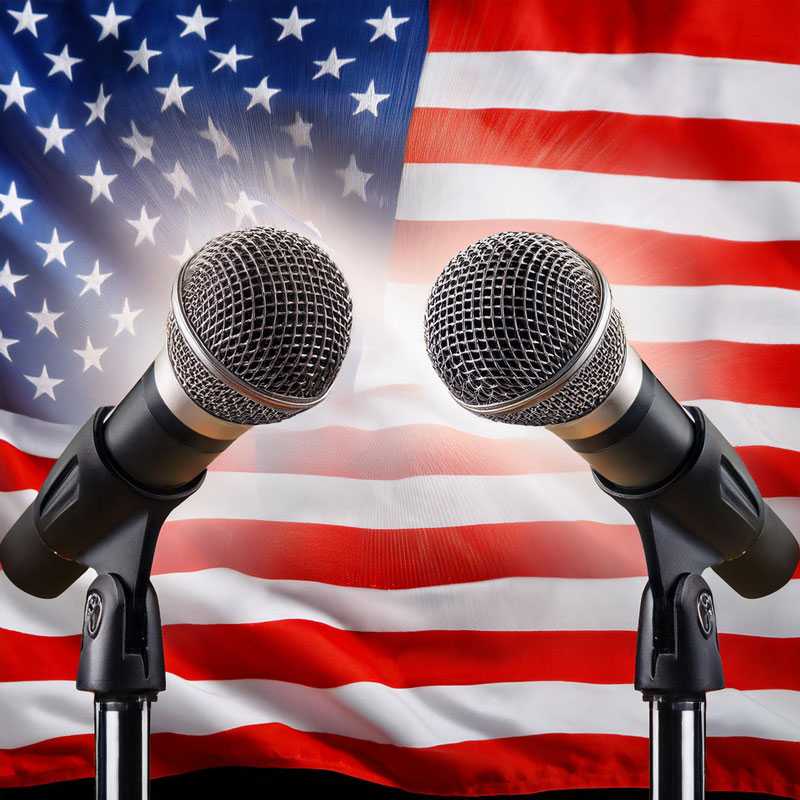
Chat, Is This Real: Understanding the Impact of Live Streamers on the 2024 U.S. Elections
October 29, 2024
This piece was co-written by APCO intern Daniel Felberg.
On August 5, former President Donald Trump appeared on Kick streamer Adin Ross’ livestream to promote his campaign. The livestream lasted for about 90 minutes and peaked at over 580,000 concurrent viewers (the third most watched stream on Kick this year). It was also historic as it was the first time a presidential nominee from a major party appeared on a livestream not hosted by their own Twitch channel. While the use of livestreaming, or just streaming, by political campaigns is not new, we are now seeing more politicians using the media format for their political campaigns. With streaming growing in popularity over the past decade, this election cycle has shown that it may be a potent way to access audiences that are unlikely to consume traditional media. As a result, being able to understand how streamers are impacting the election is crucial for digital media strategy for political campaigns.
It’s important to understand how streaming is now filling a void left by traditional media and their differences from each other. Traditional media historically played a key role in elections: beyond acting as election watchdogs for ensuring fairness and transparency, they also facilitate debates and cover election results in real time. Over the years, “election watch parties” where groups of people congregate to watch debates or the election results themselves as they are reported live, were created. But now, in reaction to more people consuming news through social media, traditional media outlets started posting live coverage of key events, such as their election coverage and political debates, on social media platforms. Streamers covering political content have embraced these into their own “election watch parties” and have enjoyed massive success as a result.
With more streamers covering political content while also utilizing a mix of entertainment news and gaming, livestreaming has started to affect how politicians engage with this type of content. In 2020, Alexandria Ocasio-Cortez and Ilhan Omar joined streamers such as Hasanabi (also known as Hasan Piker), Pokimane and others, for a game of “Among Us,” and to incentivize viewers to go out and vote. More recently, the Harris-Walz campaign created Twitch accounts for the candidates and have used those to stream their campaign speeches. On October 9, Tim Walz’s Twitch account livestreamed his speech from Arizona, while also showing World of Warcraft gameplay by Twitch creator Preheat on the side of the screen. With streaming audiences turning to social media for news coverage, politicians see that these platforms are key for reaching niche audiences that do not consume traditional media. If we look at data from coverage of the presidential and vice-presidential debates on YouTube and Twitch (using Hasan Piker as a reference), we see this phenomenon in action. Despite having a smaller audience, the streamer is able to attract nearly as many watchers, if not more, as major news organizations with far more followers:

Despite the smaller space that streaming currently occupies in the U.S. political landscape compared to traditional media outlets, streamers are still able to drive social engagement. Even a streamer with a low viewer count can generate more conversation than a primetime interviewer if their content is strong. Analyzing these trends matters because it can provide insight into audiences that traditional media cannot reach. Going forward, professionals who work in digital media, particularly those who work alongside political campaigns, need to make sure they’re aware of, and able to answer, the following:
Organizations that can reach streaming audiences are able to tap into one of the fastest growing and most dynamic social markets on the internet. To that end, APCO can help provide organizations with the necessary social listening tools for companies to succeed in this changing and influential environment.